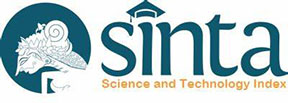The Influence of Ascorbic Acid on Growth and Production of Soybean (Glycine max (L.) Merril) Under Drought Stress Condition
DOI:
https://doi.org/10.32734/jopt.v6i1.3056Keywords:
ascorbic acid, drought stress, soybeanAbstract
The low productivity of soybean in Indonesia was caused by natural factors, biotics, cultivation techniques and soybean plant physiology. Extensification program to meet the needs of soybeans can be solved by using dry land, of drought stress. The study was conducted at the Screen house Faculty of Agriculture, Universitas Sumatera Utara, Medan (± 32 meters above sea level), on July to October 2017, using a randomized block design with 2 treatment factors. The first factor is drought stress with 3 levels ie 80% ; 60% and 40% field of capacity(FC) . The second factor is an ascorbic acid with 4 levels of concentration ie: 0 ; 100 ; 200 and 300 ppm.. The observed of variables ie number of leaves, total leaf area, dry seed weight per plant, 100 seed weight and harvest index. The results showed that the increased treatment of drought stress (80 – 40% FC) had the significant on all observed variables. The Ascorbic acid treatment no significant on all observed variable with the average number of leaves and the highest total leaf area at use 200 ppm ascorbic acid and the lowest at control treatment. The interaction no significant on all observed variable.






















